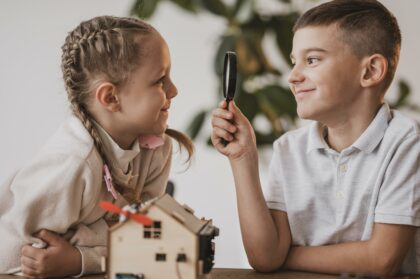Цели: коммуникативно-речевое развитие учащихся через чтение аутентичного текста. Создание ситуации, способствующей возникновению мотива, определяющего предстоящую деятельность, а именно мотива к чтению.
ЗадачиРечевая компетенция: развивать произносительные навыки в диалогической речи, навыки аудирования и чтения с полным пониманием прочитанного.Языковая компетенция: научить употреблять в речи лексические единицы по теме.Социокультурная компетенция: ознакомить с творчеством американского писателя-фантаста Айзека Азимова.Компенсаторная компетенция: развивать языковые догадку и воображение, творческое мышление, критическое мышление, память.Учебно-познавательная компетенция: развивать навыки работы с текстом, умение выделять основную информацию из прочитанного текста об отношении человека к роботу. Развивающий аспект: развивать психические функции, связанные с речевой деятельностью (внимание, способность к анализу, логическое мышление, критическое мышление, языковую догадку, зрительную и слуховую память).Воспитательный аспект: повышать интерес к изучению английского языка, формировать мотивацию к чтению, воспитывать культуру языкового общения, уважительное отношение друг к другу, умение внимательно слушать собеседника.Этапы урокаI. Mотивация к деятельности – 2 мин.II. Актуализация знаний -3 мин.III. Постановка учебной проблемы. Работа над текстом -15 мин.IV. «Открытие нового знания». Выведение трех законов о роботах -7 мин.V. Рефлексия деятельности -3 мин.Ход урокаI. Мотивация к деятельности.Teacher: Hello! My name is Fеdor Fedorovich. (Демонстрация слайдов с пейзажами из Якутии.)Can you guess, where I’m from? Дети отвечают.Yeah! You’re right. I came here from Yakutia. I’d like to show you a fragment of a film. (Демонстрация фрагмента фильма.)Have you seen this film? Who are the main characters? Who is that, famous Hollywood actor? I think you know him.Class: Will Smith.Teacher: What will we talk about today? Class: robots, Films…Teacher: Yes! We’re going to talk about Robots. (На столе появляется небольшой робот.) If they are kind, Intelligent? May be dangerous for us? May be they help us? What they can do?II. Актуализация знаний.Teacher: Children, I’d like you to greet my robot! His name is «Wally»! What do you think, what it can do? (Демонстрация возможностей робота.)Look. What is it doing? What can it do?Class: It is moving. It can see you. It can speak. It can turn to the right/left! It can move fast/slow.III. Постановка учебной проблемы. Работа над текстом.Teacher: And what do you think? Can it be harmful to people or not? Is it dangerous or not? Why?Дети отвечают.Teacher: OK. I’d like you to read a text, so as to answer my question – if robots are dangerous or not.1. Дотекстовые упражнения – Prereading.Teacher: Look at these two people! And try to guess! (На экране муж и жена.)Who of them said: «I won’t have my daughter entrusted to a machine»? And who: «He is cleverer than half of my office staff»?2. Аудирование и одновременное чтение текста. Самостоятельная работа.Teacher: Now please, listen and read the story and check your guesses.Дети читают (см. приложение). Проверяют свою догадку.3. Проверка понимания прочитанного текста. Afterreading.Teacher: Who thinks, that robots are dangerous? Please, raise your hands.You’ll be the first team and you’ll support George’s opinion.You’ll be the second team and you’ll support George wife’s opinion.Now I give you jumbled text, you should put these phrases in the right order, make up a dialogue. Дети в группах составляют диалог в правильном порядке.4. Ролевая игра (импровизация диалога). Teacher: Well and now I’d like you to act your dialogue. Дети инсценируют диалог.IV. Открытие нового знания. Выведение трех законов о роботах по А.Азимову.Teacher: Who is cleverer? Who made robots? Of course, people are cleverer, because people made machines, robots. That’s why, people created rules for robots. Please, look and say, what are the rules for robots?Демонстрация первого закона (робот едет и останавливается перед человеком – «Игрушка».)The first rule is: A robot may not injure a human being.Демонстрация второго закона (робот выполняет приказы человека – «я говорю, он выполняет».)The second rule is: A robot must obey orders given it by human beings.Демонстрация третьего закона (робот едет и останавливается перед обрывом – «робот едет по столу и не выходит за линию».)The third rule is: A robot must protect its own safety.V. Рефлексия деятельности.Teacher: Children, was it interesting for you to learn anything new about robots? Particularly, to learn rules for robots?And do you know, who wrote this story about robots? На экране фотография Айзека Азимова.It was written by Isaac Asimov. He was an American scientist and writer and very interesting fact is that he was born in Russia! Asimov wrote science fiction stories. It is a part of a story taken from his book «I, robot». Домашнее задание. Do you want to learn more about robots? Дети отвечают.Then, please, find the book «I, robot» by Isaac Asimov and enjoy it.ПриложениеA part of a book «I, robot»… Mrs. Weston waited patiently for two minutes, then impatiently for two more, and finally broke the silence.«George!»«Hmppf?»«George, I say! Will you put down that paper and look at me?»The paper rustled to the floor and Weston turned a weary face toward his wife. «What is it, dear?»«You know what it is, George. It’s Gloria and that terrible machine?»«Now don’t pretend you don’t know what I’m talking about. It’s that robot Gloria calls Robbie. He doesn’t leave her for a moment.»«Well, why should he? He’s not supposed to. And he certainly isn’t a terrible machine. He’s the best darn robot money can buy and I’m damned sure he set me back half my office staff»He made a move to pick up the paper again, but his wife was quicker and snatched it away.«You listen to me, George. I won’t have my daughter entrusted to a machine – and I don’t care how clever it is. It has no soul, and no one knows what it may be thinking. A child just isn’t made to be guarded by a thing of metal.» … Только диалоги (фразы даются на отдельных бумажных лентах, дети должны собрать их в нужной последовательности):- «George!»- «Hmppf?»- «George! Put down your paper and look at me»- «What is it, dear?»- «You know, George. It’s Gloria and that terrible machine?»- «He isn’t a terrible machine. He’s cleverer than half of my office staff»- «I don’t care how clever it is. I won’t have my daughter entrusted to a machine. It has no soul.»Федор УШКАНОВ, учитель английского языка Малыкайской средней школы им. М.В.Мегежекского Нюрбинского района Республики Саха (Якутия), учитель года Республики Саха-2013







 Выбор читателей
Выбор читателей







Комментарии